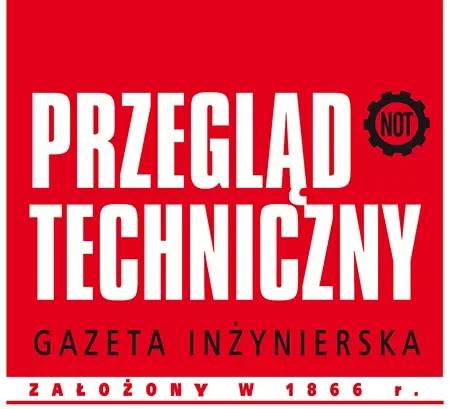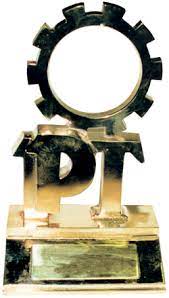The use of artificial intelligence in prevention can contribute to earlier detection of diseases and faster referral of patients for appropriate treatment – says Dr. Ing. Piotr Sobecki, head of the Laboratory of Applied Artificial Intelligence at the Information Processing Center-State Research Institute (OPI PIB), in conversation with Lidia Sosnowska.
Artificial intelligence, until recently the subject of sci-fi novels and films, is making an increasingly bold entry into industry, medicine and even our everyday reality. The ability of machines to learn, plan and reason scares some, while others see great potential in AI. How is it with medicine? Does AI bring more benefits or risks?
The benefits of using AI in medicine, for example, are the ability to analyze large amounts of data in a short period of time, allowing for faster diagnoses, more accurate prediction of treatment outcomes, and optimization of drug doses and timing of administration. All of this results in better clinical decisions, more efficient healthcare and better outcomes for patients. Threats, on the other hand, are issues related to the privacy of patient data, potential misdiagnosis and liability for medical errors linked to artificial intelligence. Undeniably, clear legal regulations and ethical standards are needed for the use of AI in medicine.
Let’s stop at the benefits. What are the possibilities of using artificial intelligence in medicine?
In diagnostics, AI can support the identification of diseases based on the analysis of medical images, such as X-rays, MRIs and CT scans, as well as integrate multi-modal data toward personalized medicine – where diagnostic decisions take into account in-depth knowledge of a patient’s condition, such as supported by genetic testing. Add to this the monitoring of patients’ conditions, for example, in the form of apps to control chronic diseases such as diabetes. AI also has applications in rehabilitation, where robots and software help to properly perform exercises and monitor patients’ progress. As I mentioned, the AI makes it possible to analyze a large amount of information on given cases. This will make it possible in the future to break down the barriers created by the huge number of scientific reports from all over the world – by analyzing all these scientific publications and discovering knowledge from them, which is beyond the capabilities of a single person.
Where is AI most commonly used today?
The largest number of solutions in the field of diagnostic support systems enriched with artificial intelligence methods are used in radiology. Of the more than five hundred such solutions registered by the Food and Drug Administration (FDA ), three-quarters of them are used in diagnostic imaging. Cardiology, hematology and neurology are next in line.
Does this also apply to Poland?
In our country, artificial intelligence is also being used in many medical fields. For example, Cardiomatics is developing an ECG analysis tool, using AI algorithms to contribute to more effective detection of cardiovascular disease. In addition, artificial intelligence is key in the process of monitoring the health of patients remotely, which is particularly important in the care of people with chronic diseases. A good example is its use in the StethoMe app, which enables home diagnosis of respiratory diseases.
The potential of artificial intelligence is also seen in accelerating the processes of discovering and testing new drugs. Polish company Biolumo is using it to create personalized therapies for patients with bacterial infections. This allows more effective treatment and reduces the growth of antibiotic-resistant bacteria. Finally, an important example of work in this area is the projects conducted by our laboratory. We are developing AI solutions to support diagnostic imaging.
What is the focus of the research conducted by OPI PIB’s Applied Artificial Intelligence Laboratory?
First and foremost, on developing systems based on deep neural networks to aid in the diagnosis of diseases such as prostate cancer. Based on the analysis of medical images acquired by MRI, a descriptive examination report is created in accordance with currently recognized global diagnostic standards. By basing the results of automatic analysis on a lexicon (dictionary) of terms related to standards, the results of predictions made by the AI are interpretable by radiologists. In this case, we are dealing with an explainable artificial intelligence, that is, one that is understandable to the viewer and its predictions are transparent. Such systems can achieve efficiencies similar to experienced radiologists, a study confirms.
When can this solution be implemented?
In training form – over the next few years.
Will the wider use of artificial intelligence in medicine change the work of doctors, diagnosis, preventive measures? Can AI ever replace them?
With AI, the way doctors work will change in the future. He will have more time to talk to the patient and focus on diagnosis. Artificial intelligence will provide him with important information to help him make decisions. However, the final diagnosis will still be up to the doctor. The use of AI in prevention can help detect diseases earlier and refer patients for appropriate treatment.
This sounds optimistic. And do you see barriers to the wider use of AI in medicine?
Artificial intelligence has the potential to revolutionize medicine. However, its full utilization is hampered by numerous barriers. Among the most important are strict regulations on data privacy and medical ethics, lack of data access and system interoperability, insufficient understanding and acceptance of AI by patients and medical staff, costs associated with implementing AI technology, and a shortage of AI specialists.
What, then, is necessary for the AI revolution to occur in medicine?
Several conditions must be met, including: the introduction of regulations to enable the safe use of AI in medicine, increased investment in technology infrastructure, medical and technology education, improved cooperation between the medical and technology sectors, building public acceptance of AI technologies, and educating professionals who are knowledgeable in both medicine and IT.
Thank you for the interview.





